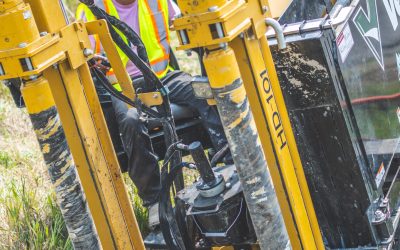In today’s data-driven world, the demand for faster, more reliable internet service is ever-increasing. A key component in meeting this demand within long-haul networks is the implementation of effective fiber optic splicing. This technique is crucial for extending the reach and enhancing the performance of telecommunications infrastructure. Let’s delve into how fiber optic splicing for long-haul networks plays a pivotal role in maximizing connectivity across vast distances.
Understanding Fiber Optic Splicing
Fiber optic splicing is the process of joining two fiber optic cables together. It is a critical step in the construction of a sprawling network that ensures signal continuity and strength over long distances. There are two primary methods of splicing:
- Fusion Splicing : This method involves using an electric arc to fuse or weld two fibers together. It is highly favored for its reliability and the minimal loss of signal it causes.
- Mechanical Splicing : This method uses a mechanical fixture to align and join the fiber ends. While quicker and easier than fusion splicing, it is generally less reliable and results in greater signal loss.
Benefits of High-Quality Splicing in Long-Haul Networks
For long-haul networks, where cables must traverse extensive geographical areas, the quality of splicing is paramount. Here are some of the benefits of high-quality fiber optic splicing:
- Enhanced Signal Integrity : Proper splicing minimizes loss and maintains the quality of the signal over long distances.
- Increased Network Reliability : High-quality splices reduce the risk of failures and the need for costly repairs and maintenance.
- Scalability : Effective splicing allows for future network expansions without significant overhauls, facilitating scalability as demand grows.
Challenges and Solutions
While fiber optic splicing offers numerous benefits, it also comes with its own set of challenges, particularly in long-haul networks:
- Environmental Factors : Long-haul networks are exposed to various environmental factors such as temperature fluctuations and physical disturbances, which can affect splice quality.
- Access and Repair : Accessing a splice point for repair or maintenance in a long-haul network can be challenging due to its remote or difficult-to-reach locations.
To address these challenges, it is crucial to use advanced splicing techniques and to ensure that skilled technicians perform the splices. Regular testing and maintenance should also be part of the network management strategy to ensure long-term reliability.
The role of fiber optic splicing in long-haul networks cannot be overstated. It is a fundamental aspect that determines the efficiency, reliability, and scalability of our global telecommunications infrastructure. By investing in high-quality splicing techniques and ongoing maintenance, network operators can ensure that their networks meet the growing demands of the modern world. As we continue to push the boundaries of what is possible with digital connectivity, the importance of mastering fiber optic splicing in long-haul networks will only grow more critical.


